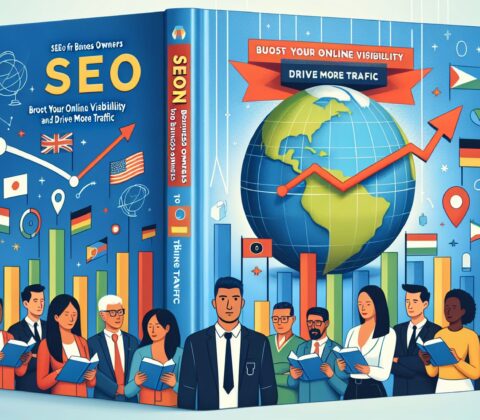

SEO for Business Owners: Boost Your Online Visibility and Drive More Traffic
As a business owner in the digital age, you’re well aware of the importance of having a strong online presence. But how can you ensure that your target audience finds your business when they search for products or services that you offer? This is where Search Engine Optimization (SEO) comes into play.
SEO is the process of optimizing your website and online content to improve its visibility in search engine results. By leveraging SEO techniques, you can drive more organic (non-paid) traffic to your website and increase your chances of converting visitors into customers. In this blog post, we’ll explore the key components of SEO and how you can effectively implement them to enhance your online presence.
Understanding the Basics of SEO
Before diving into the world of SEO, it’s essential to grasp the fundamental concepts. Search engines like Google, Bing, and Yahoo use algorithms to determine the order in which websites appear in search results. While search engines consider various factors when ranking websites, there are a few key elements you need to focus on:
1. Keywords: The Foundation of SEO
Keywords are the words and phrases that people use when searching for information online. Identifying and incorporating relevant keywords into your website and content is crucial for SEO. Conduct thorough research to uncover keywords that are highly relevant to your business and have adequate search volume. Use these keywords strategically in your website copy, meta tags, headings, and URLs to improve your website’s visibility in search results.
2. Content Is King
Creating high-quality and original content is one of the most effective ways to improve your website’s SEO. Regularly publishing valuable content not only increases your chances of ranking higher in search results but also establishes you as an authority in your industry. Keep your content informative, engaging, and well-structured, optimizing it with the relevant keywords you discovered during your research.
3. On-Page Optimization
On-page optimization involves optimizing individual web pages to improve their visibility in search results. Besides incorporating keywords into your content, ensure that your meta tags (title, description) accurately describe your page’s content and include relevant keywords. Additionally, optimize your URLs to be concise, keyword-rich, and easily readable by both search engines and your website visitors.
4. Off-Page Optimization
Off-page optimization refers to activities that take place outside of your website but still impact your search engine rankings. One crucial aspect of off-page optimization is building high-quality backlinks. Backlinks are links from other websites that direct users to your site. The more reputable and authoritative the websites linking to you, the greater credibility search engines assign to your website, resulting in improved visibility.
Implementing SEO for Your Business
Now that you have a solid understanding of the key components of SEO let’s dive into how you can effectively implement these strategies for your business:
1. Invest in Professional SEO Services
Unless you have an in-house SEO expert, investing in professional SEO services can significantly enhance your online visibility. An experienced SEO agency will leverage their expertise to conduct thorough keyword research, optimize your website’s technical aspects, create high-quality content, and build authoritative backlinks. While it may involve a financial investment, the long-term benefits are well worth it.
2. Optimize Your Website for Mobile
With the increasing use of mobile devices, having a mobile-responsive website is no longer optional. Mobile optimization is crucial not only for providing a positive user experience but also for SEO. Search engines prioritize websites that are mobile-friendly when delivering search results to users on mobile devices. Ensure that your website is fully responsive and loads quickly on various screen sizes to improve your SEO rankings.
3. Harness the Power of Social Media
Social media platforms can be incredibly powerful tools for SEO. Create and maintain an active presence on platforms like Facebook, Twitter, Instagram, LinkedIn, or any relevant social media site for your business. Sharing valuable content from your website on social media not only helps to increase brand awareness and engagement but also drives traffic back to your website. Additionally, when your content is shared and linked to on social media, it contributes to building valuable backlinks, improving your SEO rankings.
4. Monitor and Adapt Your Strategies
SEO is an ongoing process, and it’s crucial to monitor your website’s performance regularly. Utilize tools like Google Analytics to track your website’s traffic, engagement, and conversion rates. Identify which SEO strategies are working well and which ones need improvement. Keep an eye on your competitors’ SEO tactics and adjust your strategies accordingly to stay ahead.
Conclusion
As a business owner, investing time and effort into SEO is essential for driving more organic traffic to your website and staying competitive in the digital marketplace. By understanding the basics of SEO, implementing effective strategies, and continuously monitoring and adapting, you can boost your online visibility, reach your target audience, and ultimately grow your business. Remember, SEO is a long-term game, so get started today and reap the benefits in the years to come.
Comments are Disabled